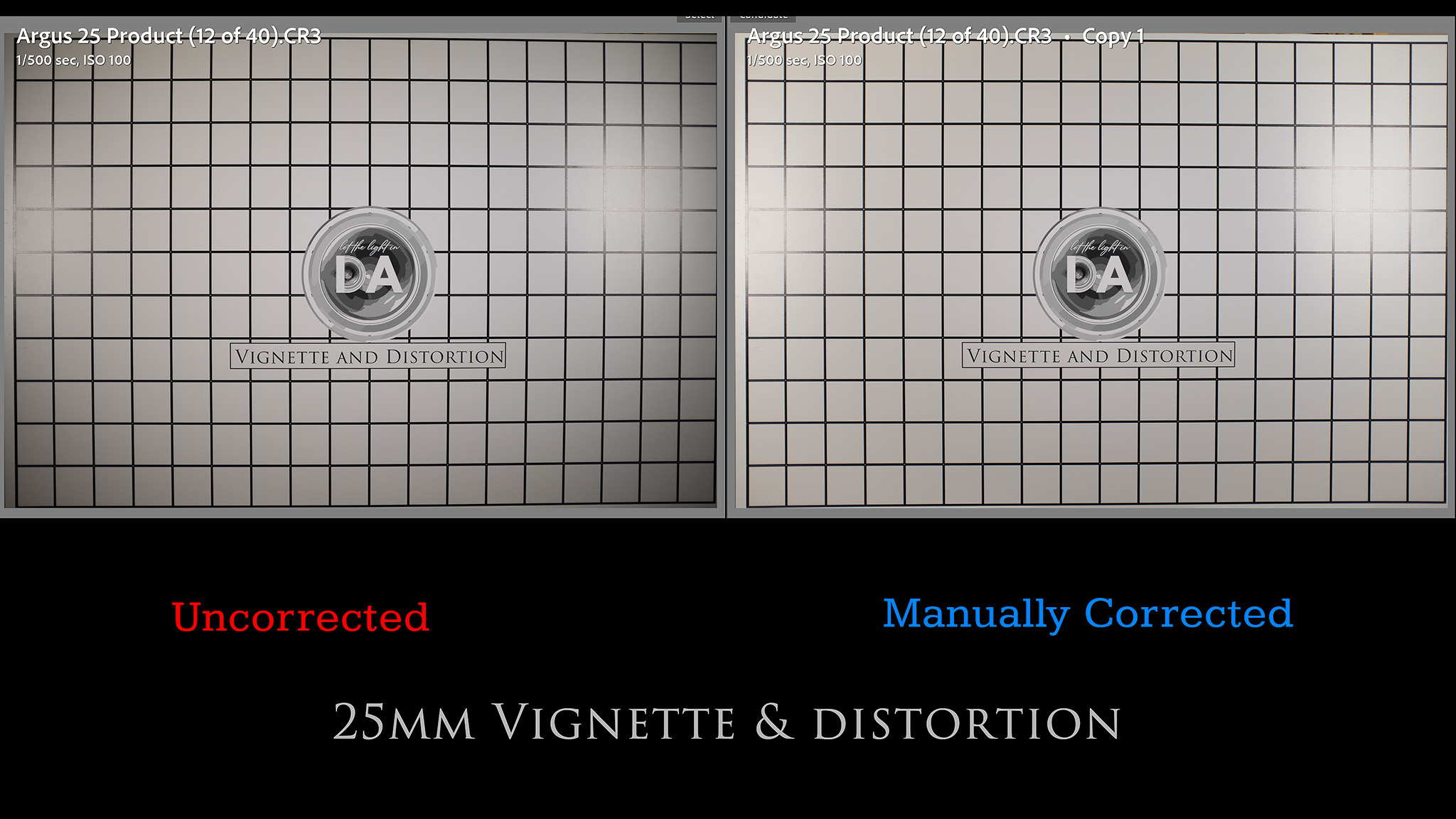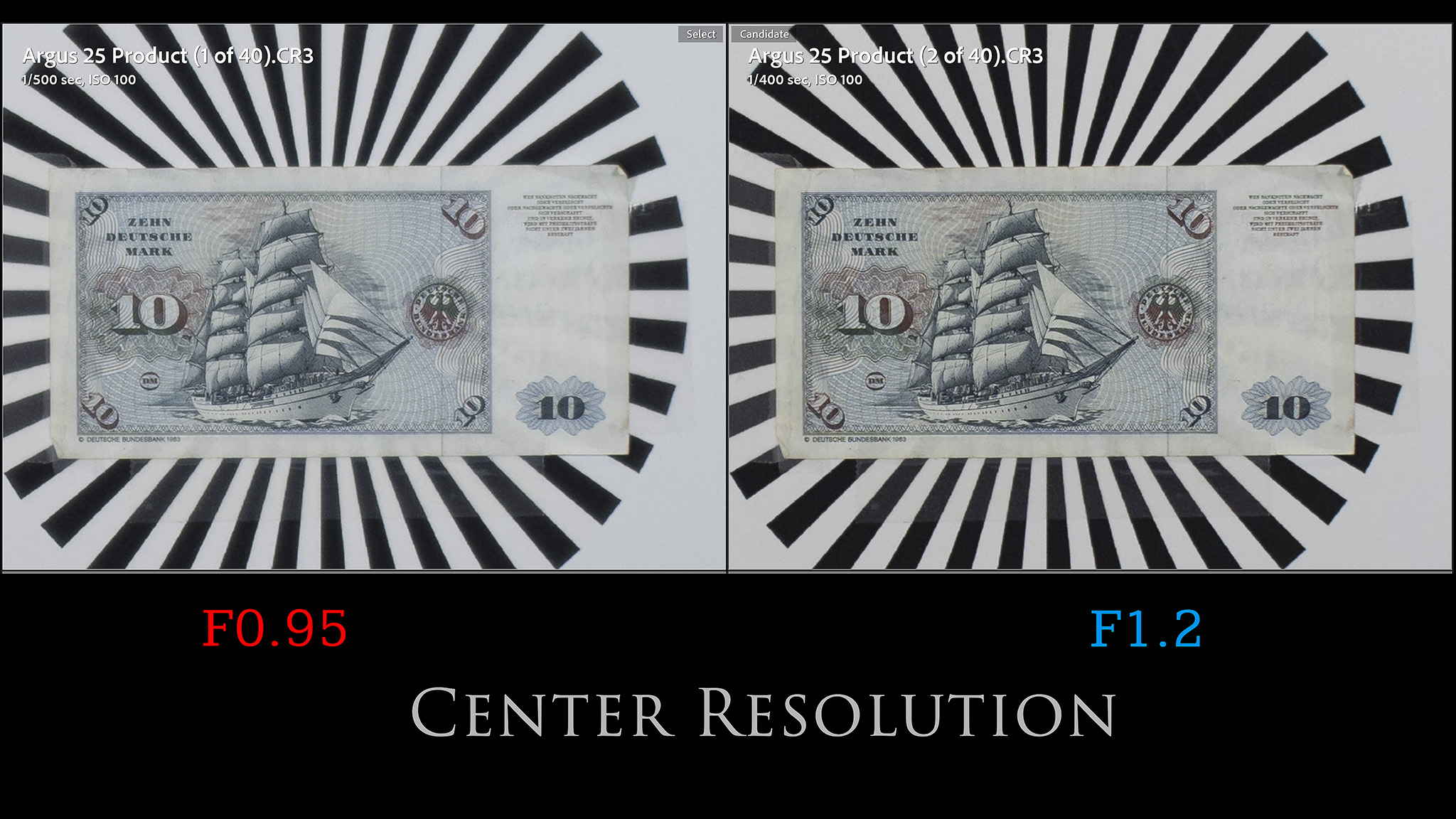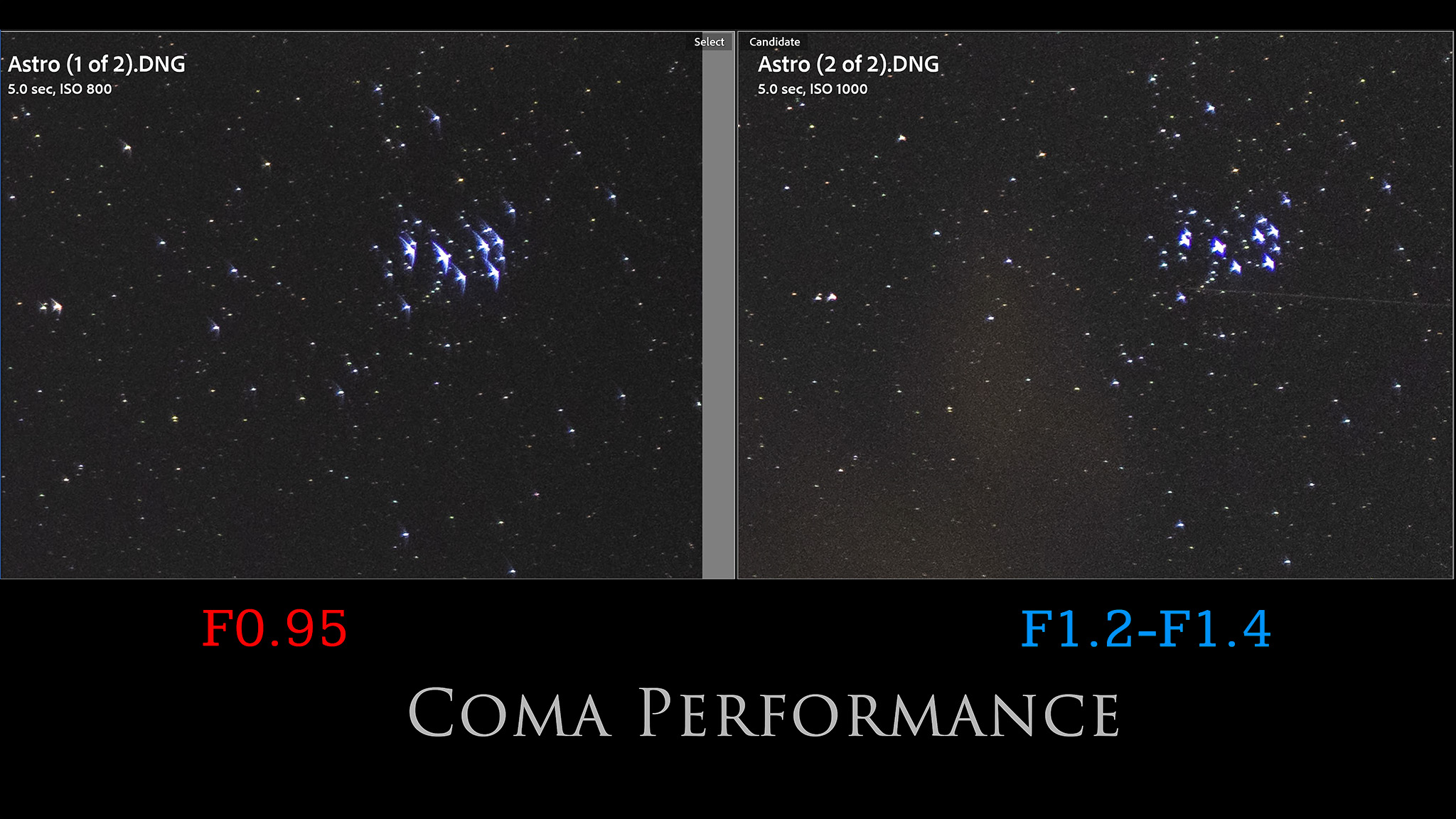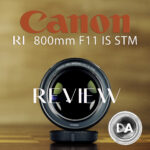A little over a year ago I spent some time with my first Laowa Argus lens. The Argus series is a more premium line of prime lenses that to this point have all had the extreme maximum aperture of F0.95. That lens, the Laowa Argus 35mm F0.95, proved an interesting lens with a dual personality that I documented in my review. Slightly dreamy wide open, extremely sharp when stopped down. The Argus 35mm (and the accompanying Argus 45mm) were designed for full frame sensors, but the subject of today’s review – the Laowa Argus 25mm F0.95 APO – is for the smaller APS-C sensor, with the lens available in Sony E, Nikon Z, Canon RF and EF-M, and Fuji X. What sets the Argus 25 (which I’ll refer to it as for brevity in the review) apart from the previous Argus lenses is that Laowa has employed their APO technology on this lens, which does give it a different character than previous Argus lenses.
A lens with an Apochromatic design has better correction of chromatic and spherical aberration than the much more common achromat lenses. Put simply, most lenses struggle with the fact that colors don’t always focus at the same distance, which results in green or purple (red) fringing due to the fact that those colors aren’t focusing on the same plane of focus. Whereas most lenses are corrected for two color wavelengths (typically red and blue), an apochromatic lens is able to bring three color wavelengths into focus on the same focus plane. This produces a near absence of chromatic aberrations and allows for higher contrast and a near absence of the veiling (lack of contrast) that produces “soft” images. True apochromatic lenses tend to be very sharp and very contrasty. They also are corrected for spherical aberrations on two wavelengths rather than one. Typically very large maximum aperture lenses (particularly those with maximum apertures greater than F1.4) are quite prone to A) fringing and B) low contrast at very wide apertures. The Argus 25 manages to deliver higher contrast results with lower fringing in the sweet spot of the frame:
But APO lenses do have a common downside, and that is that the higher contrast of APO lenses on the subject also leads to more contrast in the defocused area (bokeh) as well, which can result in bokeh that isn’t quite as soft and creamy. That can unfortunately mitigate one of the great strengths of a very wide aperture lens. I do think that is true to some extent here, as while there’s definitely more contrast at F0.95 than I typically see, there’s also slightly more busyness in the bokeh.
The behavior of this focal length will vary according to the crop factor of the camera that you have it mounted to. Sony/Fuji/Nikon have a fairly similar 1.5x crop factor (giving you a 37.5mm full frame equivalent focal length), but the Canon mounts will use Canon’s 1.6x APS-C crop, which results in a 40mm full frame equivalent focal length, which is just enough to take you from wide angle to normal range. Of the two potential focal lengths, I would slightly prefer the Canon crop focal length as I think it is a more definite focal length and less “caught in between” than what the 1.5x crops produce. 40mm is a very flexible focal length for a lot of subjects.
So join me as I explore whether or not tweaking the Argus formula with a little APO magic produces a better end result. You can find my conclusions by watching my video review or reading on in this text review.
A brief review note: When Laowa reached out to me about reviewing the Argus 25 I didn’t clue in that it was an APS-C lens, so I agreed to receive a Canon RF mount loaner. Unfortunately I don’t own a Canon RF-mount APS-C body, so I’ll be doing the review on my full frame Canon EOS R5 in APS-C mode. It’s a reasonable amount of resolution (17MP), but not really high enough to challenge this lens.
Follow Me @ YouTube | Patreon | Instagram | Facebook | DA Merchandise | Flickr | 500px
Thanks to Laowa for sending me a loaner of the Argus 25mm. As always, this is a completely independent review and all conclusions are my own.
Laowa Argus 25 Build and Handling
This is definitely not a small lens for an APS-C prime, though the Argus 25 isn’t impractically large. It is 71.5mm in diameter (leaving a 62mm front filter thread) and 81mm in length (that’s 2.81 x 3.18”). It weighs in 575g (20.28 oz) due to Laowa’s typical heavy duty, all metal lens construction. I’ve compared Laowa lenses to classic Zeiss lenses in construction, and that’s never been more apt than on this more premium Argus lens. Everything is beautifully made.
The focus ring is made of ribbed metal and moves smoothly and precisely along its near 160° of rotation. The weight is just about perfect, giving you plenty of feel and precision in the focus process.
This is an all manual lens without any electronics, which does mean that both focus and aperture must be controlled manually. The aperture ring also moves smoothly, and you have the choice of using it “clicked” or “declicked”. There is a switch on the left side of the barrel that allows you to choose between the two. When “clicked”, you will feel light detents at the major aperture stops (F1.2, F1.4, F2, F2.8, etc…) This is the typical arrangement for photographers. In the “declicked” mode the aperture will smoothly move throughout its whole range without any stops. This allows for videographers to do aperture “racking” and is typically the preferred approach for videography.
The aperture blade count is lower here than what I saw with the Argus 35mm. Instead of the very high 15 blade count, we have a more standard 9 bladed aperture. It still retains a fairly circular shape when stopped down, however, but isn’t quite as circular (or visually appealing) as the 15 bladed aperture.
You can see the shape of bokeh highlights stays round as you stop the lens down from wide open to F1.2 to F2:
In some situations you will get a bit of a “swirl” effect to the bokeh due to the geometric deformation on the edges of the frame, but this is actually a fair popular effect.
With the aperture blades retracted, however, you can see a LOT of glass in the Argus 25:
As a fully manual lens, there are no switches or controls other than the rings and the aperture click control. The lens does have nicely etched distance markings along with a hyperfocal guide.
There isn’t anything like weather sealing, image stabilization, or any kind of electronics built into the lens. If you’re not familiar with how lenses like this work, they do function largely as normal save you have to control focus and aperture. The camera will still meter properly and takes photos as normal, though you will have to turn ON a setting in the camera to release the shutter without a lens attached. This seems counterintuitive, since a lens IS attached, but since there are no electronics, the camera doesn’t know a lens is there. What isn’t as normal, however, is that no electronic information is submitted to the camera, so the camera won’t know the focal length or lens designation nor the selected aperture for the shot. There will be no automatic distortion or vignette correction; this will all have to be dealt with in post. The EXIF data only contains what the camera provides, like ISO and shutter speed. If you have a camera with IBIS (in body image stabilization) you will have to manually set the focal length on the lens, but then the image stabilization will work normally.
One very unique design element here is the lens hood, which has a squared, anamorphic-look design. I’m not quite sure what the logic is here, as for strictly photography this isn’t necessarily a positive development. It means that the lens hood will have to removed to use filters on the lens. By necessity the lens cap also has a unique design where it clips onto the sides of the lens hood. The leather-patterned texture on the front of the lens hood and the shape of the lens hood itself gives this lens a bit of a retro vibe to it. You’ll either love or hate it, I suspect.
The Argus 25 feels dense and well made (Laowa can be proud of the build quality), though I would like to see some further progression by Laowa on both the electronics side along with some weather sealing on these premium lenses. I want to see Laowa go to the next level of lens development, as I know they are capable of it. The Laowa 25mm F0.95 Argus APO is priced at $549 USD, which makes it a little too expensive to be considered a bargain but inexpensive enough that someone interested in premium manual focus lenses can probably afford it.
Focus Thoughts
In so many ways mirrorless cameras have breathed new life into manual focus lenses. The ability to magnify the image in the viewfinder, or to have focus overlays, or other focus aids made possible by an electronic viewfinder enables very accurate focus results with a lens like the Argus 25. I had very few results I had to discard because of inaccurate focus. That’s not to say that focus is as fast, obviously. Getting a well focused result requires being a little more deliberate.
But a good camera body and viewfinder helps immensely. My Canon EOS R5 is one of my favorite cameras ever for manual focus, as I find the viewfinder very clear and easy to see when focus is in the right area (aided by a bit of focus overlay). Being able to have a stabilized image while focusing due to IBIS doesn’t hurt, either.
One of the huge advantages of a lens with a maximum aperture this big is the simple fact that it can suck in so much light, which does really help even in very dim situations. Take this image, for example:
It looks like a normal image taken under normal lighting conditions, but the reality was that there was almost no light left outside and inside was extremely dim. I shot at ISO 1600 at F0.95 to get this shot at 1/160th second. If I were shooting with a zoom lens starting at F2.8, I would have to cranked the ISO to 12,800 to get the same shot at the same shutter speed, which is where most all APS-C cameras really fall apart in terms of noise. The only other option would have been to reduce the shutter speed way day, which results in much more likeliness of motion blur. You might get away with it with a still subject like this, but what if your subject is moving? If you shoot in dim rooms or environments (restaurants, bars, etc…) a lens like this will allow you to get clean images in a way that many others will not. I focused like normal here despite the dim conditions.
In summation, the focus ring moves smoothly and accurately, and I had no issues with focus during my review.
Laowa Argus 25 Optical Performance
The Argus 25 has a fairly complex optical formula with 14 elements in 9 groups. The MTF chart at F0.95 shows a surprisingly strong center result, a fairly steep drop in mid-frame performance, but then a flattening out of the curve with the corners nearly as good as the mid-frame.
It’s unusual to see that much sharpness at F0.95, but I think the lens is helped by the Apochromatic design. Typically F0.95 lenses aren’t particularly impressive near maximum aperture. As you increase the maximum aperture size you all also increase the risk of many optical aberrations. The most typical are low contrast, high chromatic aberrations, heavy vignette, and being extremely flare prone. You can pretty much guarantee that all of these will happen to some degree; the question is how much these aberrations can be minimized. I was intrigued to see how the APO design would counterbalance the massive maximum aperture, and the results are interesting.
We’ll start with some of the standard tests before I delve into the more subjective opinions on the lens.
Vignette is a typical Laowa weaknesses, and it is very evident here. I had to nearly max out the vignette correction slider to achieve the result on the right above. A typical Laowa strength is low distortion, and that’s true here. I needed only a +3 to correct a mild amount of barrel distortion. The vignette is going to be factor, though, even at smaller apertures. At F0.95, it will certainly give your images a “look” (in this case a dark and gloomy one):
Like many Zeiss lenses, this can be part of the overall look of the images, however. A feature rather than a bug, so to speak. In some images the heavy vignette really draws your eye towards the center of the frame, though this obviously works best with a center composition.
An Apochromatic design definitely goes a long ways towards eliminating Longitudinal Chromatic aberrations (LoCA), and I can see only the faintest amount of green fringing after the plane of focus.
You are unlikely to see this in most real-world situations.
Lateral CA (LaCA) is slightly more evident, with a bit of fringing marring the transitions from black to white on the edges of the frame on my test chart.
As noted in the intro, I had to do my formal tests at slightly lower resolution than optimal due to having to use the APS-C mode on my R5. We’ve only got 17MP of resolution to work with as a result, but that’s enough to get a good sense of the lens. Here’s a look at my test chart.
If we look at crops at F0.95 from across the frame, we see the kind of pattern suggested by the MTF charts, though the mid-frame results are very slightly better than expected.
Since many shots are composed with the subject in the sweet spot for resolution, I found that real world results were quite crisp for an F0.95 lens…at F0.95.
I was also pleasantly surprised to see that I could produce a fairly credible landscape image at F0.95:
You can see some lateral chromatic aberrations and softness towards the edge of the frame, but there’s definitely some fairly crisp portions of the image as well.
Stopping down to F1.2 does add more contrast punch to the image, particularly in the center.
By F1.4 the center is very impressive, though the mid-frame and corners still lag behind the center. By F2 the mid-frame is looking quite crisp:
The corners take until about F4 before reaching peak sharpness. By landscape apertures (F5.6-8), the lens is sharp across the frame, resolving fine details in a beautiful fashion:
I tend to like the colors from Laowa APO lenses better than I do their standard lenses, and I think that’s true here. Something about that extra contrast gives more punch to the colors.
An image like this shows a nice three-dimensional pop to the subject:
So, on one hand, I feel like choosing to go with an Apochromatic design helps solve some of the big problems a lens with a huge maximum aperture. But it also reduces one of the most effective aspects of such a lens, which is the soft, creamy bokeh. It is often the reduced contrast and even the aberrations that help produce that lovely bokeh…and an APO design eliminates some of those flaws. Out goes the baby with the bathwater! Images like these should have lovely, soft bokeh, but I see more busyness than what I would like.
Likewise here, as while I like the image in general, I find a little more outlining and busyness in the bokeh than what is optimal.
But bokeh is a subjective measurement, so I’ll you deliver your own verdict on the quality of the blur.
On a positive note, however, I found the Argus 25 to be better than average in flare resistance for a lens with such a large maximum aperture. I shot several different scenarios with bright sun, and other than some loss of contrast at wide apertures, I felt the lens did fairly well.
I’ve yet to see a huge aperture lens that was actually a great astrophotography lens. The Argus 25 isn’t going to be the first. At F0.95 star points are reasonably crisp in the center, but there is some obvious fringing around the brightest star points. If you look towards the edges, however, you see what either looks like host of angels or a flock of birds fleeing the frame. It’s neither – it is the result of some fairly wicked coma.
Stopping down a bit (no EXIF data, and I was in the dark, so I’ll estimate about F1.2 to F1.4), we can see that rather than flying geese we have shrunk to pigeons, but there’s still a fair bit of coma.
This is a great lens in the dark because it can suck in so much light, but not necessarily for capturing the stars or individual bright lights.
Overall, the Laowa 25mm F0.95 Argus is essentially what I expected when I saw the APO in the design. It’s sharper and more contrasty than the typical F0.95 lens, and feels more usable at that huge aperture, though at the cost of that dreamy look that many people love about such a lens. It all comes down to what you value in lens design. Feel free to check out more images by visiting the image gallery here.
Conclusion
The Laowa Argus 25mm F0.95 APO is both similar and different than the Argus 35mm F0.95 full frame lens that I reviewed. The APO design does alter the formula, which results in more usable sharpness results at huge aperture values like F0.95.
It also means that the bokeh isn’t quite as soft, however, which might turn off some of the core audience that is interested in a lens like this.
These are all a matter of preference, however, and what is definite is that there is always room for more premium prime lenses for APS-C, a space that often gets overlooked. This is a serious lens, and it is interesting to see Laowa bring some of their APO experience that they’ve developed in their macro lens designs into a more extreme lens like this. You’ll have to determine for yourself whether or not the end result is something you’re looking for, but I will say this: the list of F0.95 lenses with an Apochromatic design and a price tag of under $550 USD is a VERY short one.
Pros:
- Nice quality build and finish
- Huge maximum aperture
- Higher contrast and sharpness than most F0.95 lenses
- Smooth, well damped focus ring
- Ability to declick aperture
- Low distortion
Cons:
- Soft corners at large apertures
- Some lateral chromatic aberrations
- Bokeh can be a little busy
- Quite a bit of coma
- Heavy vignette
Gear Used:
Purchase a Laowa Argus 25mm F0.95 @ B&H Photo | Amazon | Amplis Foto (use code AMPLIS52018DA for 5% off) | Amazon Canada | Amazon UK
Purchase a Canon EOS R7 @ B&H Photo | Amazon | Camera Canada | Amazon Canada | Amazon UK | Amazon Germany | Ebay
Purchase a Canon EOS R5 @ B&H Photo | Amazon | Camera Canada | Amazon Canada | Amazon UK | Amazon Germany | Ebay
Purchase a Canon EOS R6 @ B&H Photo | Amazon | Camera Canada | Amazon Canada | Amazon UK | Amazon Germany | Ebay
Want to support this channel? Use these affiliate links to shop at: B&H Photo | Amazon | | Camera Canada | Ebay | Make a donation via Paypal
Buy DA Merchandise https://bit.ly/TWIMerch
Peak Design Leash Strap: Peak Design Store | B&H Photo | Amazon | Amazon Canada | Amazon UK
Adobe Photoshop Creative Cloud 1-Year Subscription
Get a discount off all Skylum Editing Software (Luminar, Aurora HDR, AirMagic) by using code DUSTINHDR at checkout:
Visit Dustin’s Amazon Storefront and see his favorite gear
Purchasing your gear through B&H and these links helps fund this website and keeps the articles coming. You can also make a donation here if you would like. Visit my Amazon page for some of my gear of choice! Thank you for your support.
Purchasing your gear through B&H and these links helps fund this website and keeps the articles coming. You can also make a donation here if you would like. Visit my Amazon page for some of my gear of choice! Thank you for your support.
Receive a 5% discount on all purchases at Amplis Foto, Canada’s Leading Photographic Supplier. Please enter discount code: AMPLIS52018DA in your cart. It is good for everything in your cart, and is stackable with other coupons, too! It will take 5% off your entire order! Proceeds go towards keeping this site going and providing you with new reviews!
Use Code “DUSTINHDR” to get $10 off ($15 CDN) any Skylum product: Luminar, Aurora, or AirMagic
Keywords: laowa 25mm, laowa 25mm F0.95, laowa 25mm F/0.95, laowa 25 argus, argus, 25mm, F0.95, F/0.95, APO, laowa, laowa 25mm F0.95 review, laowa 25mm argus review, Review, Dustin Abbott, Portrait, Canon EOS R5, R5, R6, EOS R, Sony a6600, Canon R7, Fuji X-T4, Sharpness, Resolution, Bokeh, Video Test, Sample Images, Real World letthelightin, DA


















